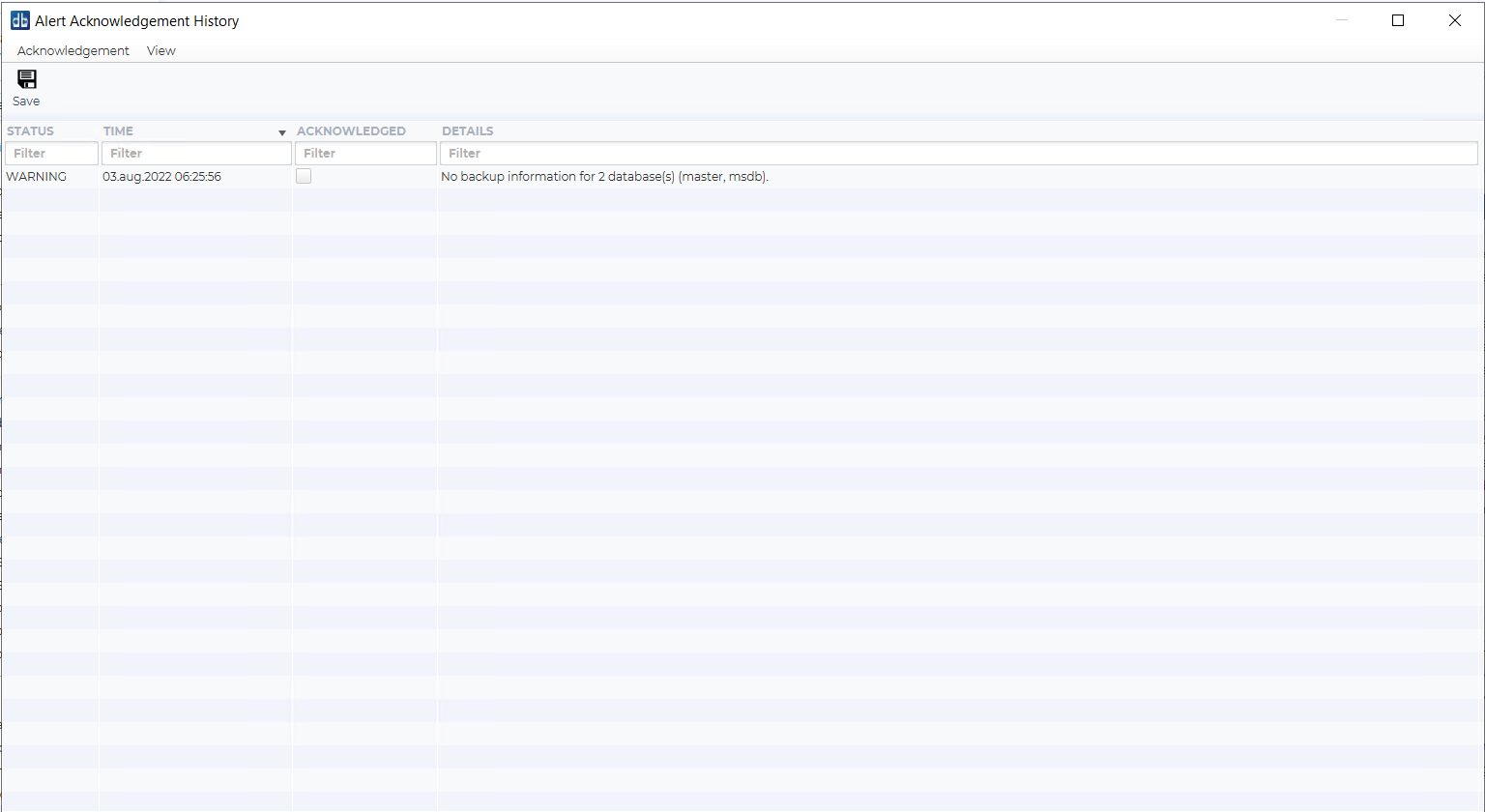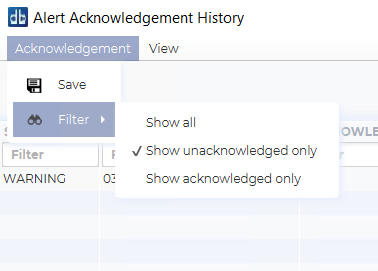Acknowledgement system
The acknowledgment system is designed to make sure that jobs that have had alarms in the past, but now have changed status, is known to the DBA.

By default we list all un-acknowledged warnings or alarms in the “Alert Acknowledgement History” view. If you tick the “Acknowledged” radio-button, and click save, the warning will disappear from the list. If you use the “Acknowledge all” button in the job menu, all old warnings and alarms will be acknowledged at once.

You can later change the filtering of this view, if you want to see acknowledged warnings again, or check the history of warning for this job.